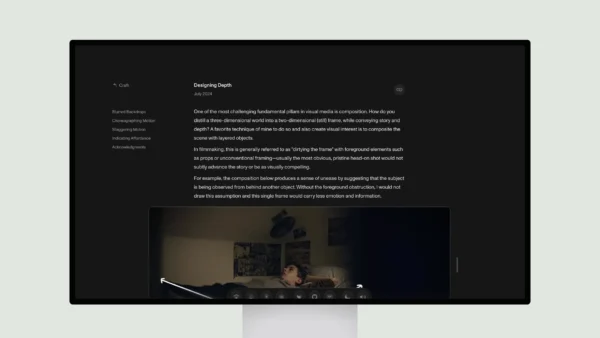The article explores how light interacts with surfaces using interactive demonstrations. It examines the effects of a light source’s power, position, and the viewing angle on the brightness and shading of surfaces. Ciechanowski explains that a surface’s brightness is determined by several factors, including the irradiance it receives based on the light’s power and the cosine of the angle of incidence. Distance also plays a role, with brightness dropping off according to the inverse-square law.
He discusses how light subtends different solid angles from various viewing positions, affecting the apparent size and brightness of objects. Radiance is introduced as a measure of brightness that accounts for both the light’s power within a solid angle and the size of the viewing receptor. Reflections are examined through ray diagrams, showing how a mirror’s appearance depends on the observer’s position relative to the incoming light.
In creative yet accessible language, Ciechanowski guides readers through fundamental optical concepts. Interactive elements help visualize complex interactions between light, surfaces and perspectives. The article provides keen insights into how lighting shapes our visual perception of the world in an engaging and thought-provoking manner.







